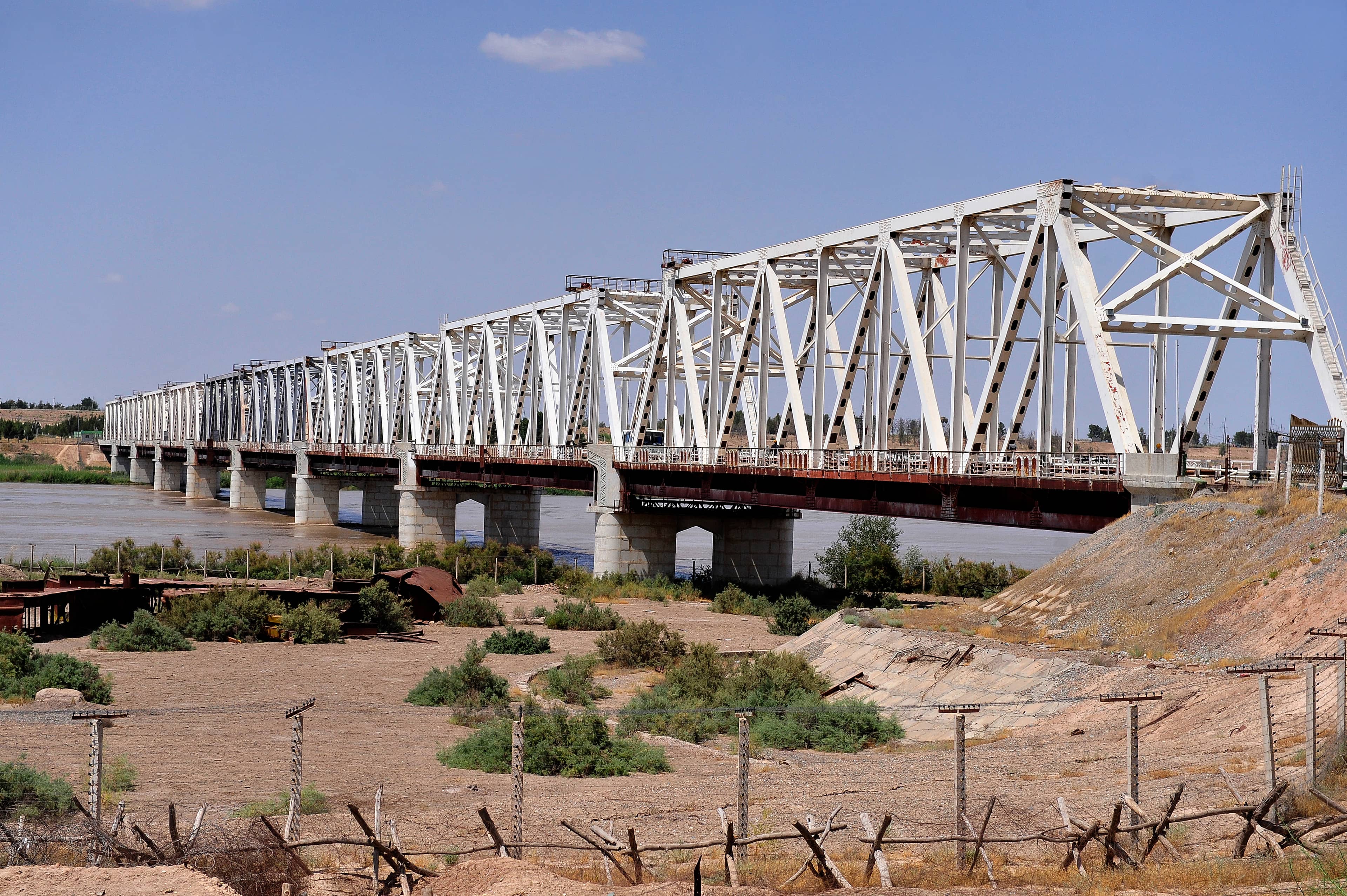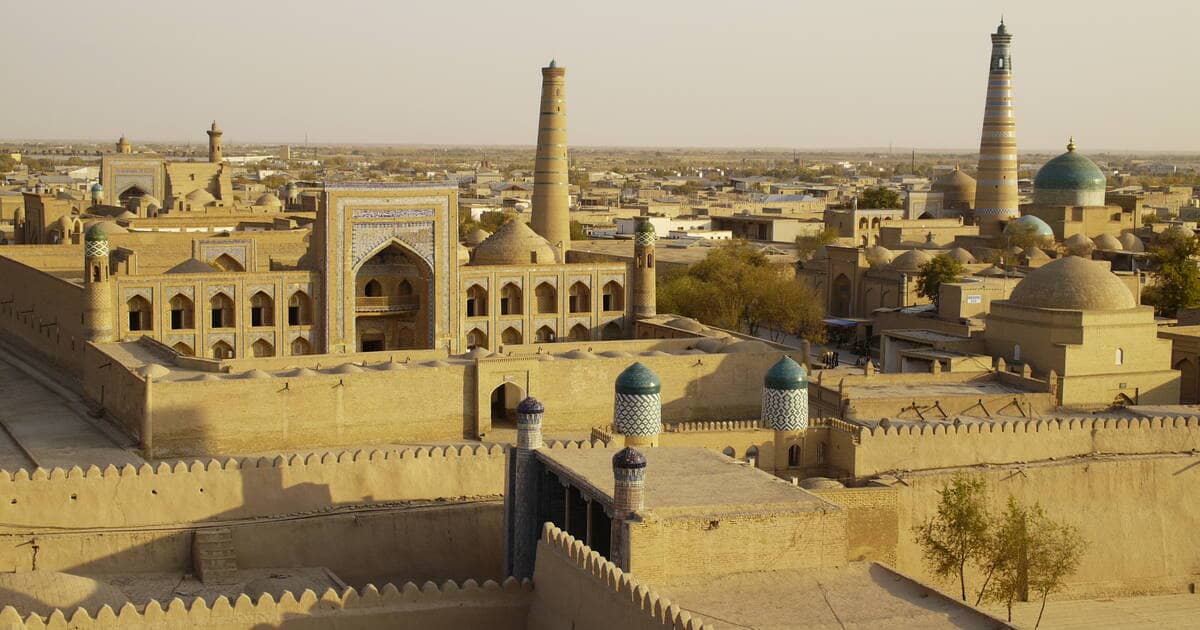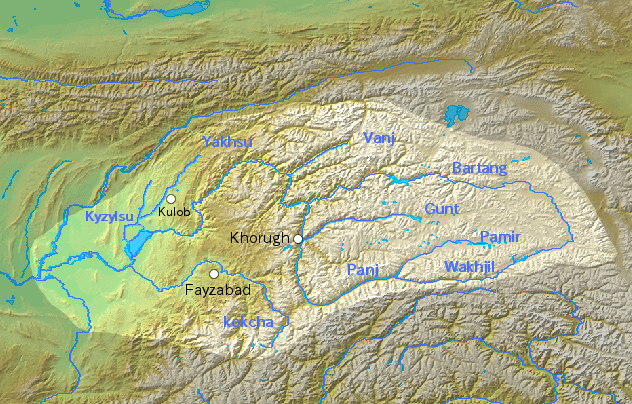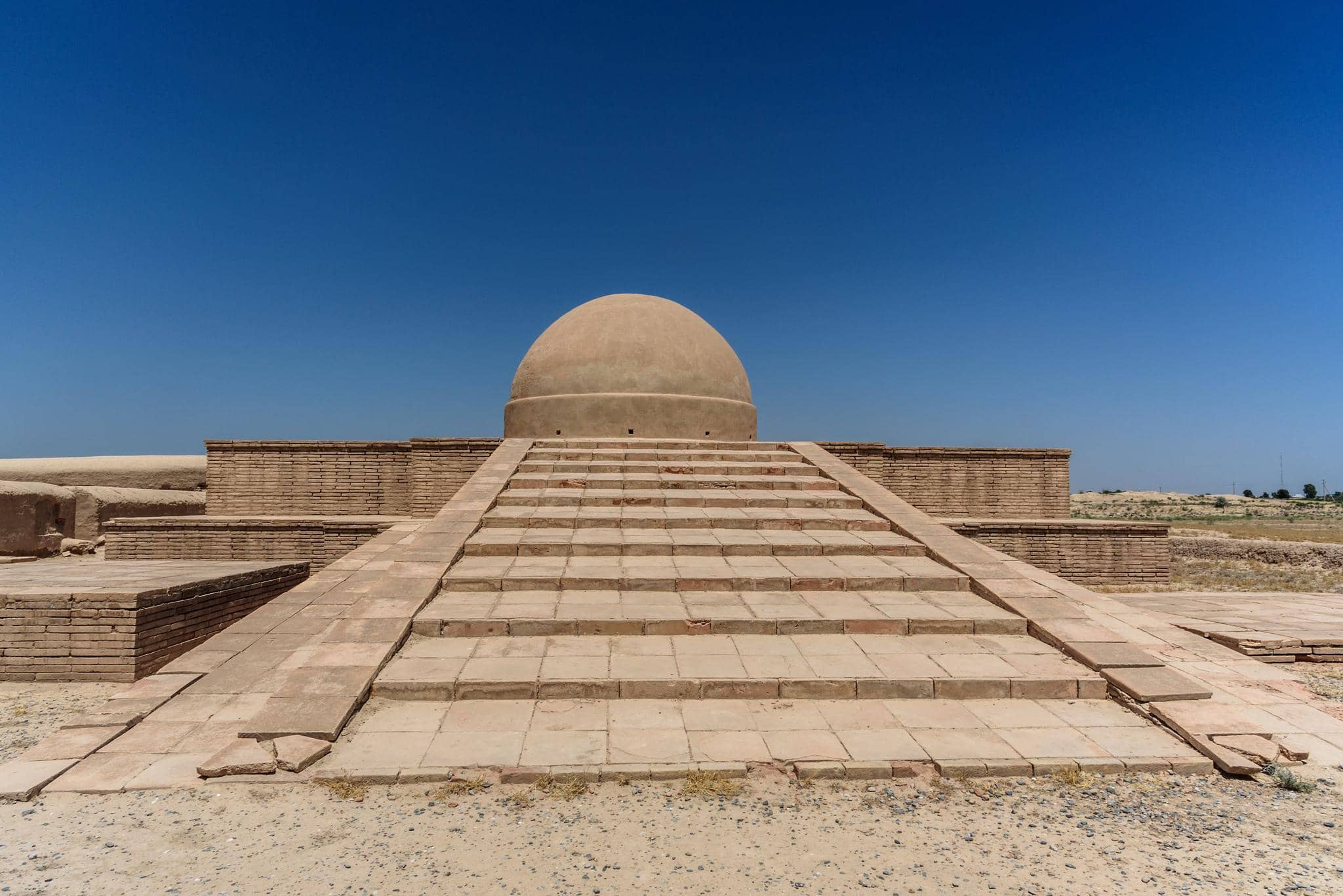Amu Darya River
Central Asia's mighty Oxus River, a historic lifeline shaping civilizations and landscapes, now a symbol of ecological challenges.

Highlights
Must-see attractions

Social
From TikTok & Reddit
Best Time
Pleasant weather, blooming nature
Amu Darya River
Best Time
Pleasant weather, blooming nature

Highlights
Must-see attractions
Central Asia's mighty Oxus River, a historic lifeline shaping civilizations and landscapes, now a symbol of ecological challenges.
"The Amu Darya is more than a river—it's one of the great arteries of Central Asia, shaping civilizations for millennia."
💧 Respect Water Usage
The Amu Darya's water is crucial for irrigation. Be mindful of its importance and potential scarcity.
🗺️ Study the Map
The Amu Darya is vast. Familiarize yourself with specific regions and their attractions before you go.
Highlights
Discover the most iconic attractions and experiences

Friendship Bridge
Afghanistan-Uzbekistan border
Witness a key crossing point of the Amu Darya, symbolizing regional connections and trade.

Khiva's Ancient Oasis
Uzbekistan
Explore the historic walled city of Itchan Kala, a Silk Road gem near the Amu Darya.

Panj River Confluence
Tajikistan-Afghanistan border
See where glacial meltwater from the Pamirs forms the powerful Panj, a major tributary.

Fayaz Tepa Archaeological Site
Termez, Uzbekistan
Discover ancient Buddhist ruins near the Amu Darya, a testament to historical trade routes.
Plans like a pro.
Thinks like you
Planning Your Visit
Understand the Amu Darya's Vital Role
Navigating the River's Vastness
Best Times
Insider Tips
from TikTok, Instagram & Reddit
💧 Respect Water Usage
The Amu Darya's water is crucial for irrigation. Be mindful of its importance and potential scarcity.
🗺️ Study the Map
The Amu Darya is vast. Familiarize yourself with specific regions and their attractions before you go.
🚢 Consider River Travel
While challenging, some sections might offer unique perspectives via boat, though infrastructure is limited.
🏛️ Explore Silk Road History
Many ancient cities and trade routes are linked to the Amu Darya. Dive into the rich history.
Tips
from all over the internet
💧 Respect Water Usage
The Amu Darya's water is crucial for irrigation. Be mindful of its importance and potential scarcity.
🗺️ Study the Map
The Amu Darya is vast. Familiarize yourself with specific regions and their attractions before you go.
🚢 Consider River Travel
While challenging, some sections might offer unique perspectives via boat, though infrastructure is limited.
🏛️ Explore Silk Road History
Many ancient cities and trade routes are linked to the Amu Darya. Dive into the rich history.
📸 Capture the Landscape
The river carves through diverse terrains, offering stunning natural and historical photo opportunities.
What Travellers Say
Reviews Summary
Travelers often highlight the Amu Darya's historical significance and its role as a natural border, particularly between Afghanistan and Uzbekistan. The river's connection to ancient trade routes and its dramatic landscapes are frequently praised. However, some note the environmental impact of water diversion and the challenges of accessing certain parts of the river.
"I passed on the bridge. It was beautiful area"
Ameeq
"Amu river which is actually coming from pamir n noshaq glaciers and also called darya panj is the devision border between tajikistan-Afghanistan, turk-afg and uzbak-Afg. These picture has been take at friendship bridge between Afg-Uzbek."
AliAkbar Sakhi
"The extensive irrigation may provide food for many, but is killing off thousands of fish in the Aral (once sea) Lake due to the rapid draining of water. If the irrigation would stop people would be able to fish again in the Aral Lake and it could return to it's formal glory."
Appolinaire
What People Like
What People Dislike
Frequently Asked Questions
🚇 🗺️ Getting There
Travel along the Amu Darya is complex due to its vastness and border crossings. Major cities like Termez and Khiva in Uzbekistan are accessible by air and rail. For border regions, local transport or organized tours are often necessary.
Key crossings include the Friendship Bridge between Uzbekistan and Afghanistan, and the Panj River forms a natural border between Tajikistan and Afghanistan.
While historically significant for trade, regular passenger boat services are rare. Local boats might be available for short distances in specific areas, but it's not a common tourist activity.
Khiva is located west of the Amu Darya. You can reach Khiva by flight to Urgench (the nearest airport) followed by a short taxi ride, or by train.
Accessing the Amu Darya in Afghanistan can be challenging due to security. The Friendship Bridge offers a view, and areas near border towns might be accessible with local guidance.
🎫 🎫 Tickets & Entry
Generally, there are no direct entry fees for viewing the Amu Darya itself. However, access to specific sites along its banks, like historical cities or archaeological parks, will have their own admission fees.
Yes, border regions, especially those forming international boundaries like between Tajikistan and Afghanistan, often require special permits. Check with local authorities or tour operators well in advance.
Opening hours for sites like Itchan Kala in Khiva or Fayaz Tepa vary. It's best to check the specific hours for each attraction closer to your visit, as they can change seasonally.
For major historical sites in Uzbekistan like Khiva, online booking options are becoming more available. For border areas or smaller sites, purchasing tickets on-site is more common.
Photography is generally allowed in natural areas. However, in border zones, military installations, or certain historical sites, photography might be restricted. Always observe local signage and ask if unsure.
🎫 🧭 Onsite Experience
Activities include exploring ancient Silk Road cities like Khiva, visiting archaeological sites, experiencing local culture, and appreciating the unique desert and river landscapes.
Swimming in the Amu Darya is generally not recommended due to strong currents, potential pollution, and varying water quality. Stick to viewing and appreciating the river from the banks.
Lightweight, breathable clothing is recommended for the climate. Modest attire is advisable, especially when visiting cultural or religious sites. Comfortable walking shoes are essential for exploring cities and ruins.
Visit historical cities like Khiva and Termez, explore museums, and read up on the Silk Road history. Local guides can offer invaluable insights into the river's past.
The river's water is heavily used for irrigation, leading to reduced flow and impacting the Aral Sea. Pollution from agricultural runoff is also a concern.
🍽️ 🍽️ Food & Dining
In cities like Khiva and Termez, expect delicious Uzbek cuisine. Try plov (rice pilaf), shashlik (kebabs), lagman (noodle soup), and samsa (savory pastries).
While direct riverfront dining might be limited, many restaurants in cities like Khiva offer atmospheric settings that evoke the historical Silk Road era, often with views of ancient architecture.
In more remote areas, dining options are scarce. It's advisable to carry snacks and water. If traveling with a tour, meals are often included or arranged.
It is generally recommended to drink bottled water throughout Central Asia, including areas near the Amu Darya, to avoid potential stomach issues.
Bazaars in cities like Khiva and Termez are excellent places to find fresh fruits, vegetables, nuts, and local snacks.
📸 📸 Photography
Iconic spots include the Friendship Bridge, the ancient city of Khiva, the Panj River gorges, and archaeological sites like Fayaz Tepa. The river's journey through desert landscapes is also photogenic.
Sunrise and sunset offer the most dramatic lighting for landscape photography. Midday can be harsh, but good for capturing details in historical sites.
While dedicated Amu Darya photography tours might be rare, many Central Asia tours incorporate visits to key photographic locations along its course.
A versatile lens (e.g., 24-70mm) is useful for landscapes and cityscapes. A wide-angle lens can capture expansive desert vistas and architectural details. Consider a sturdy tripod for low-light conditions.
Always ask for permission before photographing individuals, especially in more traditional communities. Respect local customs and privacy.
For Different Travelers
Tailored advice for your travel style
👨👩👧 Families with Kids
🏛️ History Buffs & Culture Enthusiasts
🌍 Eco-Conscious Travelers
Deep Dives
In-depth insights and expert knowledge
The Amu Darya: A Lifeline and a Legacy
However, the river's ecological health has faced immense challenges. Extensive irrigation projects, particularly for cotton cultivation, have drastically reduced its water flow downstream. This diversion of water is a primary reason for the catastrophic shrinkage of the Aral Sea, once the world's fourth-largest lake, turning it into a stark environmental disaster zone. Travelers can witness the impact of these environmental changes firsthand, offering a profound perspective on the delicate balance between human needs and ecological preservation.
Exploring the Amu Darya region offers a unique glimpse into a land shaped by both its mighty river and its complex history. From the ancient walled cities that thrived on its banks to the modern challenges of water management, the Amu Darya is a powerful symbol of Central Asia's enduring spirit and its ongoing environmental narrative.
Navigating the Amu Darya: Travel and Infrastructure
Major historical cities such as Khiva in Uzbekistan, situated near the river, are relatively accessible via air (to Urgench) and rail. However, venturing into more remote areas along the riverbanks often necessitates local transport, private drivers, or organized tours. Information on public transport directly following the river's path is scarce, and road conditions can be challenging. It's advisable to research specific regions of interest thoroughly and consider hiring local guides who possess invaluable knowledge of the terrain and cultural nuances.
While the Amu Darya was historically a vital artery for trade and transport, modern passenger boat services are not a common tourist offering. Travelers seeking unique perspectives might find limited opportunities for short boat trips in specific locales, but the primary modes of exploration remain land-based. Planning your itinerary around accessible cities and historical sites will provide the most rewarding experience of this magnificent, yet environmentally sensitive, river.
Social
from TikTok, Instagram & Reddit